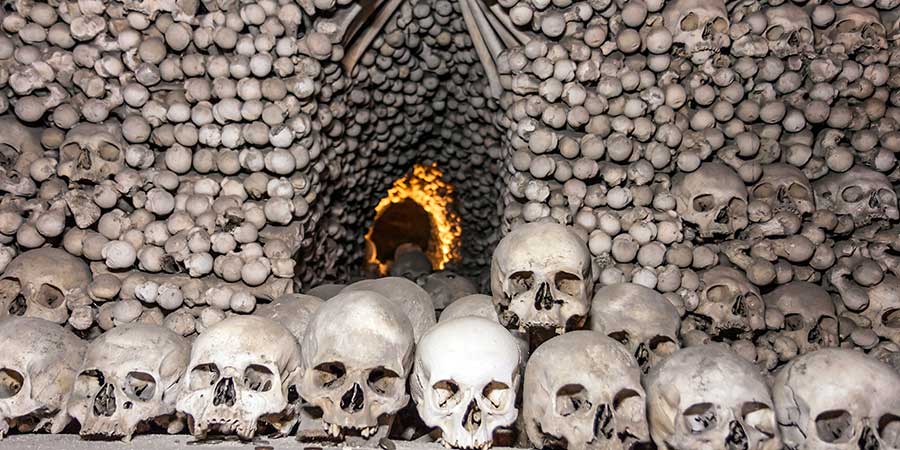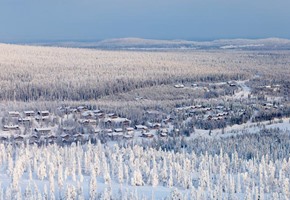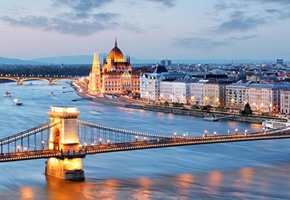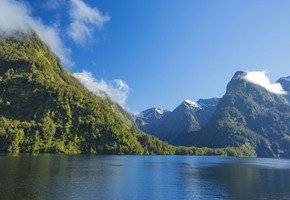We've all heard of Lake Erie in Ohio, which by all accounts doesn't live up to its name whatsoever, being a popular destination for vacationing American families looking to enjoy the water sports and island hopping opportunities this year-round hot spot provides. In fact, a quick trawl through the local newspaper sites reveals very few spooky goings on here. But that's not the case for the rest of our line-up, which are eerie by name and definitely eerie by nature yet also offer a fascinating insight into local customs and frightful historical events. So for the brave amongst you, read on and hope you don't have nightmares. For the…slightly odd amongst you, maybe you're about to find your new destination inspiration!
Nagoro, Japan
Our first entry is suitably sinister for anyone with an aversion to clowns, dolls or even masks. The diminutive Japanese village of Nagoro is also known as the scarecrow village because over the years, as its human population has dwindled, its mannequin one has soared and now life-sized dolls outnumber people at a rate of 100:1. This is all thanks to one woman, Tsukimi Ayano who created these creepy companions as other villagers died or moved away, in the exact likeness of her former neighbours. This also gives the whole scenario a sense of melancholy, as there are now less than 40 people but over 350 lookalikes. It probably makes for a surreal experience to visit the village itself, but for those of you curious enough you can use Google street view to take a walk through the almost deserted streets and spy dummies sitting on benches, awaiting instruction in classrooms and even headed out on a fishing trip.
Sedlec Ossuary, Czech Republic
The bone church of Kutná Hora, just east to the capital city of Prague, is already fairly well-known and attracts visitors from across the globe year after year. This doesn't make the prospect any less macabre though. The story of how this unique chapel came to display the bones of up to 70,000 skeletons begins with a plague outbreak in 14th century, when the number of dead requiring burial grew beyond the capabilities of the graveyard which then had to be extended to make way for all the extra bodies struck down by the black death. The Hussite wars of the 15th century only added to the stockpile, and in 1400 a Gothic church was erected in the midst of this busy cemetery. Over the following centuries, bodies were exhumed to make room for more recent interments and a half blind monk began piling the bones up inside the ossuary itself. For want of anything better to do with them, they stayed this way, in random formation, for around 200 years before the task of ordering the dearly departed was given to a local woodcarver in 1870, and the rest as they say is history. When visiting Sedlec, it's impossible not to get a sense of your own mortality, and the atmosphere really does incite quiet reflection. And if you look hard enough, you'll also be able to spy the signature of the woodcarver responsible for this unique display, František Rint, carved on the wall near to the entranceway.
Târgoviște, Romania
There are no clues as to the atrocities that took place in the lands surrounding Târgoviște Castle these days, but just the knowledge of what happened here in the late 15th century is enough to make the hairs stand up on the nape of your neck. Home to the infamous ruler of Wallachia (present day Romania), Vlad the Impaler, it was on this site where the bloodthirsty sovereign acted out one of his most gruesome manoeuvres. In 1461, the kingdom was under threat from the mighty Ottoman Empire, which had already ravaged much of southern and eastern Europe, and Vlad was determined that he wouldn't be yet another domino in the chain. He was already a monarch with a reputation for cruelty and a penchant for theatrics, and one of his favourite punishments, not always reserved for criminals and wrongdoers, but generally also those who just got on his wick, was impaling people (often while still alive). This was done by inserting a large, pointed wooden pole forcibly into the lower half of the torso and pushing it through the body, while trying not to hit any major organs so death really would be an agonising torment, until the stake protruded somewhere below the neck. Vlad really pulled out all the stops though when Ottoman sultan, Mehmed II, had his army invade Wallachia. As they marched across the country they came across scorched earth and raised villages, normal military defensive tactics, and were subject to guerrilla attacks during the night. However, when they reached the city gates to Târgoviște, they were surprised to find them swung open invitingly. Fearing a trap, they edged cautiously forward but were brought to a standstill by the sight that greeted them. For as far as the eye could see (seven acres to be exact) stood a forest of the most gruesome kind, in which 20,000 impaled Ottomans that Vlad had saved up from previous skirmishes were displayed as a welcome gift for the invading forces. On witnessing the grisly scene, Mehmed was reported to have said, 'it is not possible to deprive of his country a man who has done such great deeds, who has such a diabolical understanding of how to govern his realm and its people. A man who has done such things is worth much.' And with that he turned his forces around and headed straight back to Turkey.






